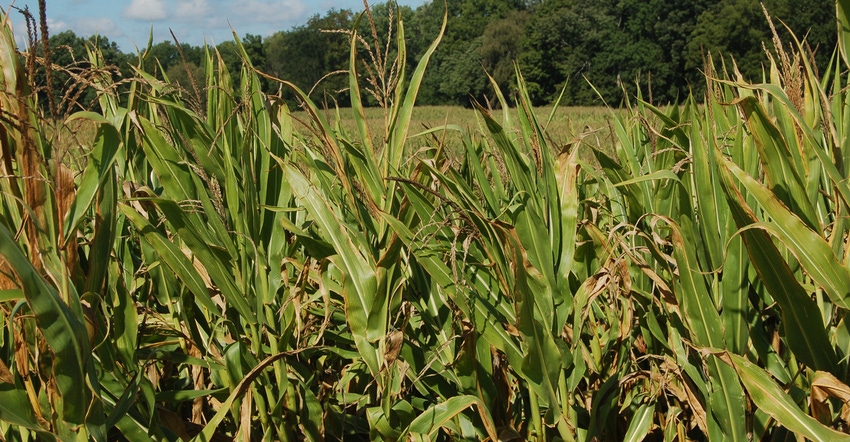
Sunscald in corn isn’t an old wives’ tale — it’s real. It just doesn’t happen very often, especially in the eastern Corn Belt. That doesn’t make it any less debilitating when it does happen.
Mark Jeschke, agronomy manager for Pioneer, says sunscald is the direct result of heat and water stress in corn. “It occurs when the increase in evaporative demand exceeds the plant’s ability to respond,” Jeschke explains. “The plant is unable to transpire water rapidly enough to cool heat-stressed leaf tissue. As a result, leaf tissue dies.”
The injury this produces is called sunscald. Dead, brown tissue appears on leaves in the canopy. Parts of affected leaves may still be green while the rest of the leaf is brown, Jeschke says.
When you first enter a field with sunscald, you may think “foliar disease.” When it first appears, the dead tissue may resemble severe northern corn leaf blight infection. That disease most commonly appears after stretches of cooler weather, when there’s plenty of moisture available. The opposite conditions favor sunscald.
If sunscald is the cause of damage, you should be able to distinguish it from the lesions that foliar diseases cause when they first invade leaves, Jeschke says.
Sunscald is more likely to appear first on younger leaves higher in the canopy, Jeschke says. Corn leaves with direct orientation to the sun are also typically most affected.
High winds make water stress worse
The first couple of rows along the edge of a field should be the most productive because they have less competition for sunlight and often produce bigger ears. However, in a year with lots of heat and not enough water, the outside rows may burn up first and be your least-productive rows.
“It’s called the field-edge effect, and it results from high winds continually pummeling the field during times of water stress,” Jeschke says.
“High wind can exacerbate heat stress. In effect, it makes water stress already impacting plants even worse. It’s typically worse on a southern or western exposure. If water stress continues, those will be where corn plants burn up first and yield less at harvest.”
Here’s how it works. Wind increases the vapor pressure deficit between leaves and the air immediately around them. VPD is the difference between how much water air can hold when it’s saturated, like inside leaf tissue, and how much water it currently holds. Plants respond by closing their stomata, which are leaf openings. But if water stress is significant, water will still be pulled out of plants.
When winds are low, this produces a layer of saturated air that remains in place around plant leaves, Jeschke explains. But high winds constantly remove the moist air, replacing it with drier air.
The higher the relative humidity, the less wind speed matters. Saturated air is replaced by winds with air that is only slightly less saturated. However, in arid conditions or on very low-humidity days, there’s more variation in VPD, and more potential for the field-edge effect to develop.
About the Author(s)
You May Also Like




